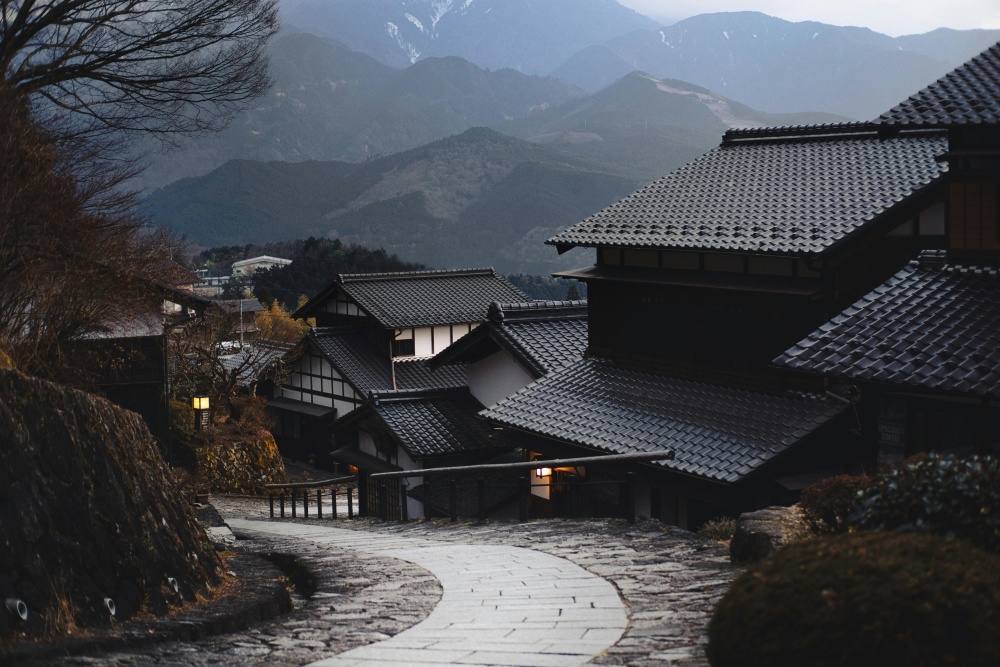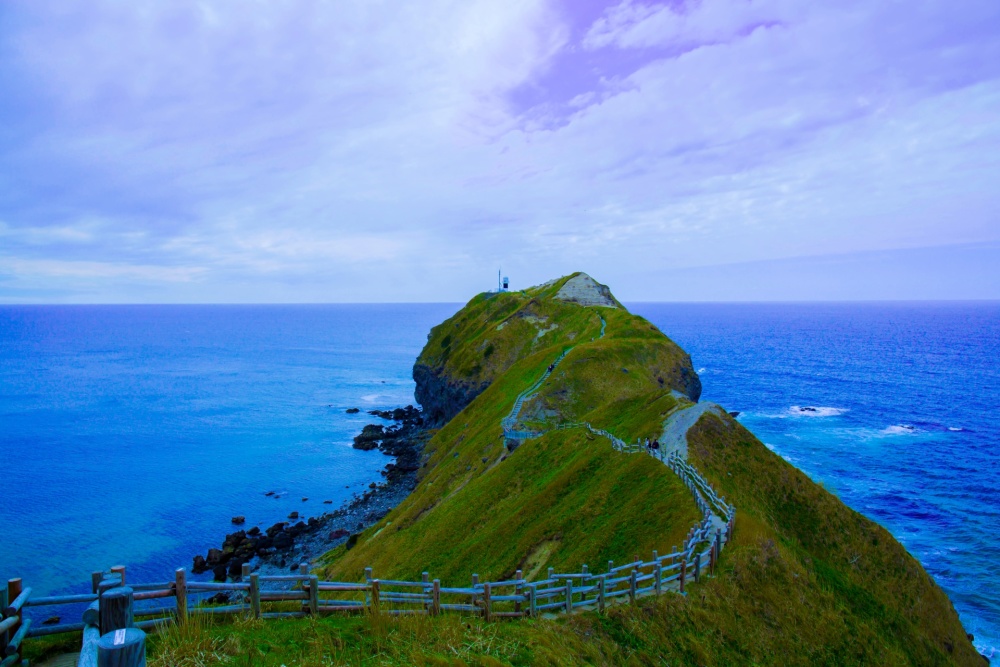Updated October 25, 2024
Best Place To Retire in Japan? Our Lesser-known Recommendations
The land of the rising sun is a popular retirement location for many, and there are quite a few good reasons for this.
From the lush green countryside, called inaka in Japanese, to the high mountaintops sprinkled with the freshest snow, Japan offers diverse settings for retirees seeking a change of pace.
In this post, we’ll recommend some of the best places to retire in Japan that provide a more authentic Japanese lifestyle, away from the hustle and bustle of larger urban centers like Tokyo, Osaka, or Kyoto. These alternative retirement destinations combine comfort, culture, and natural beauty in unexpected ways, so let’s get to it.
Why Retire in Japan?
First off, Japan is as safe as it gets. The country frequently ranks high on the Global Peace Index.
Besides, the culture of peace extends into all aspects of life in Japan. Respecting other people’s time, effort, and peace is considered highly important, and maintaining societal harmony is among the biggest social values.
On top of that, the Japanese respect nature as much as they respect people, if not more. The country boasts a beautifully diverse nature with a unique ecosystem, which you’ll see is preserved with utmost care.
So, considering Japan's countless hot springs (onsen), lush green fields, high mountaintops, and beachy-island vibes, retiring here is a no-brainer.
Where To Retire in Japan: The Best Place To Retire in Japan’s Major Cities
In our previous post detailing how one can retire in Japan, we already explored some of the larger and most common Japanese cities as retirement destinations. So, let’s quickly go over what retirement is like in these major cities again by reviewing their “pros and cons” for easier comparison:
City |
Pro |
Con |
Tokyo |
Everything available 24/7 Robust public transport |
High cost of living Life may feel too fast-paced and crowded |
Osaka |
Friendly people for a city of this scale Less chaotic city life than Tokyo |
An expensive big city Not the prettiest city |
Fukuoka |
Having access to nature while living in the city Beautiful beaches and forests |
Slow, bus-heavy public transportation system Smaller English-speaking community |
Okinawa |
Basically Hawaii of Japan A very prominent local culture |
Very damp and hot climate may pose health risks for some Harder to make friends |
Alternative Places To Retire in The Greater Tokyo Area

The Greater Tokyo Area extends beyond Tokyo’s 23 wards and covers many more cities from different prefectures. This is essentially the most populous area of Japan, offering diverse retirement options beyond the central metropolis.
Let’s start from Tokyo and work our way outside the 23 wards.
Tokyo Prefecture
If you don’t want to stray too far off from the metropolis, you might want to look into Kichijoji and Hachioji areas.
These neighboring areas can be described as the suburbs of the city. The large residential areas are accompanied by many shopping centers, restaurants, and bars, but the best thing about them is the abundance of green spaces and parks to enjoy.
As they offer the best of both worlds (city life and nature), the Kichijoji and Hachioji areas are undoubtedly among the top retirement destinations in Japan.
Alternatively, Mitaka, which is also in the same area, is worth looking into as well. It has the same characteristics as Kichijoji and Hachioji, but there are also hospitals and clinics, which may be a plus for some.
The best part about this area is that it’s the first station on the train line, which means you always get to sit on the train – a rare treat in Tokyo.
Kanagawa Prefecture
Going down to the south, you have the Kanagawa prefecture, home to two great cities for retirees.
The first is Yokohama, a beautiful city that’s fairly “urban” but with a more laid-back vibe.
Despite its proximity to Tokyo, the city is less expensive than the metropolis. However, this proximity also creates a dependency on Tokyo, as residents often travel there for shopping and entertainment. So, be prepared for a more quiet life here.
The other city worth visiting in Kanagawa is Kamakura. This seaside city is a tourist spot with many shrines and temples, but its residential side is quite calm and relaxed.
The villas by the seaside on Sagami Bay can be tempting, but the city also offers lots of green scenery. This blend of historical sights and stunning nature makes Kamakura one of the most popular destinations for retirement.
Chiba Prefecture
Chiba Prefecture, located just east of Tokyo, is an attractive option for retirees seeking a blend of urban convenience and natural beauty. As it’s in close proximity to the capital, Chiba offers a range of amenities, including shopping, good access to medical care, and cultural attractions.
In addition, the region offers stunning coastal areas along the Boso Peninsula, with beautiful beaches and parks like Kujukuri Beach and the Naritasan Shinshoji Temple.
In general, Chiba has a mild climate. The winters aren’t too cold and the summers are just warm enough to enjoy outdoor activities all-year round. The prefecture also boasts a rich history, with local historical sights such as the Chiba Castle and ancient burial mounds.
The public transportation system is quite efficient, so getting around and even reaching Tokyo is quite easy. What’s more, life in Chiba (rent, living expenses, etc.) is much less expensive overall than living in Tokyo.
The convenience, natural beauty, and cultural richness, alongside the affordability, are what make Chiba a viable choice for retirees.
Gunma Prefecture
Gunma prefecture is overall a great place to live. This is where many of Japan’s famous onsen (hot springs) are located. Due to the prefecture's mountainous landscape, you also have many skiing and snowboarding opportunities.
Needless to say, the great outdoors and nature activities are Gunma’s strong suits.
Depending on where you live, reaching Tokyo can take as little as 1 hour and 30 minutes from here, but you can have a nice urban life in Gunma, too.
Overall, unless you’re living literally in the mountains where snowfall may be an issue, all parts of the prefecture work great as a foreign retiree destination. After all, the prefecture does house one of the largest populations of foreign residents in the country.
In fact, some towns are even populated by residents of specific nationalities. For instance, Oizumi is known as the “Brazil town” of the prefecture, and has more Brazilians migrating to the city each year.
One downside of the Gunma prefecture is that the weather can get extremely hot, and with no ocean in sight, this can be depressing and even dangerous for those with health concerns.
What Is The Best Town To Retire in Japan: Other Recommendations
We may have exhausted the Greater Tokyo Area, but that’s hardly all Japan has to offer. Japan has many quiet, small towns and mid-size cities that are still laid back and great for retirement.
So, let’s now take a look at a few prefectures where you might find cities with a chill vibe or cute, historical, and traditional Japanese small towns with things to do, some of which even have easy city access.
Hokkaido Region - Hokkaido Prefecture
Hokkaido is the northernmost island and prefecture of Japan. Naturally, this means freezing cold winters, but the natural beauty of Hokkaido might be worth it.
For one, if you’re a winter sports enthusiast, this is your heaven. Even if you aren’t a fan, you can always take long hikes to enjoy Hokkaido’s natural sights.
Besides, the local government here has programs to support retirees who like to live independently. Meal delivery programs are available, and the government even provides access to medical devices and facilities to retirees living by themselves.
While you can very much live a “countryside life” here, you can also find the city vibes in Sapporo, the prefecture’s capital. With good access to medical facilities, Sapporo can be a good destination for retirement to enjoy what Hokkaido has to offer.
Speaking of which, Hokkaido has locally sourced fish and seafood, which is all one needs for a good, healthy life.
Tohoku Region – Miyagi Prefecture
Miyagi Prefecture, located in the Tohoku region, is renowned for its rich history and culture, but even more so for its stunning natural landscape. Sendai, the capital, is known as the “City of Trees” because of its numerous parks and tree-lined avenues.
The region is home to the famous Matsushima Bay, celebrated for its picturesque views and over 200 small islands.
What’s more, you get to experience all four seasons in Sendai. The climate brings about mild summers and cold winters, and the seasonal changes make for typical fall and spring seasons.
Sendai also offers a wide variety of cultural experiences, including the Sendai Tanabata Festival and traditional cuisine like gyutan, which is grilled beef tongue.
The prefecture is also well-connected by public transportation, including the Tohoku Shinkansen, allowing easy access to Tokyo and other major Japanese cities. If you don’t know how to use buy tickets, my articles on buying Shinkansen tickets via Smart EX can help.
Sendai’s relatively lower cost of living compared to urban centers and the natural beauty it boasts make this an appealing choice for retirees seeking a peaceful yet vibrant lifestyle.
The Chubu Region
The Chubu region of Japan, also known as the Central Japan region, is a diverse area with a rich cultural heritage. Not only is it home to the iconic Mount Fuji, but it also has plenty of great destinations to retire in. Here are the most notable ones.
Nagano Prefecture
Only about a one-and-a-half-hour train ride away from Tokyo is the Nagano Prefecture. This is another mountainous region, like Gunma, but the similarities don’t end there.
This is also a landlocked prefecture, meaning it’s surrounded by land on all sides with no sea around. That said, the prefecture houses a number of onsen towns which are quite calm and boast mesmerizing nature.
Not only does the prefecture allow you to become one with nature, but you also get to access lots of fresh local produce and engage in outdoor activities.
There are many smaller and bigger towns to choose from in Nagano, but if you like snow or winter sports, we recommend Karuizawa. This mountain resort town has cooler summer temperatures, so it’s also great if you hate sweating.
Overall, you’ll find Nagano much more laid back than Tokyo, but that’s the charm of it all. Besides, you still have good access to the city thanks to trains.
Yamanashi
Located west of Tokyo and neighboring Nagano and Shizuoka prefectures is another landlocked prefecture of Japan, Yamanashi.
The reason why you can see the beautiful sight of Mt. Fuji from Shizuoka is because the great mountain is located right in this prefecture.
The capital city, Kofu, is known for its grape production in the area. The city gets plenty of sunlight, making it a great environment for vineyards and, therefore, winemaking.
This ample environment for agriculture also means lots of fresh produce all year round. Besides, because it’s a considerably quieter part of Japan, your access to fresh fruits and veggies comes at much more affordable prices.
In addition to its agricultural bounty, Kofu and Yamanashi offer rich historical sites like Kofu Castle and Kai-Zenkoji temple. The mountainous landscape and the Fuji Five Lakes overlooking Mount Fuji further enhance its appeal as a retirement destination.

Shizuoka Prefecture
Located on Japan’s Pacific coastline, Shizuoka Prefecture supplies a large portion of the country’s tea. Fishing is another big trade activity in the area, as most of the Maguro tuna you’ll eat in Japan also comes from here.
That said, Shizuoka isn’t all about fishing and tea. Thanks to its location, you also get beautiful views of Mount Fuji. Plus, the many activities happening in the area, such as the Kawazu Cherry Blossom Festival, mean retirees can find lots to do here.
Suruga Bay is the deepest body of water found in Japan, meaning tuna isn’t the only seafood that’s abundant here. You also have lots of sakura shrimp and eel, as plenty as the beaches you’ll find in the area.
Shizuoka is not too far away from Tokyo. A ride to the metropolis only takes about 2 hours and 30 minutes by train, but you’ll also find many things you need in Shizuoka City. The downtown is developed enough to fulfuill your daily needs.
Aichi Prefecture, Nagoya
Aichi Prefecture is another gem of an area that houses lots of small and mid-size cities that are perfect for retirement. The climate in this region is influenced by the Pacific Ocean currents, which means that the weather is mild most of the year.
Nagoya is the capital of the prefecture, the largest city in the area, and the fourth-largest city in Japan. Many trains in this region go across the city, so there’s also a pretty big station here, making it a hub for the whole Tokai region.
Nagoya is a mid-sized, calm city. Younger residents would describe it as a retiree city. There are many hospitals and medical facilities all over town, which further emphasizes this vibe.
The city is easy to navigate on foot, but there’s also an impeccable public transport system here, making it more convenient than ever to go around.
Considering the rich cultural heritage and historical sights such as the Nagoya castle located here, as well as the convenience of modern city life without chaos, Nagoya in the Aichi Prefecture is a serious contender for the best “all-rounder” retirement city.
Ishikawa Prefecture - Kanazawa
Ishikawa Prefecture, home to Kanazawa, is a captivating retirement destination known for its rich history, stunning gardens, and vibrant art scene.
Kanazawa is famous for its well-preserved samurai and geisha districts, which provide a glimpse into Japan’s past. However, this is only the tip of the cultural iceberg in Kanazawa. The region boasts a thriving art scene, with museums like the 21st Century Museum of Contemporary Art and traditional crafts like Kaga-yaki ceramics and gold leaf production being prominent art forms.
With a moderate climate and distinct seasons, retirees enjoy outdoor activities like hiking in Noto Peninsula, exploring the coastline, and taking a stroll in one of Japan’s most beautiful and famous gardens, Kenrouken.
Overall, the relatively low cost of living, coupled with access to modern medical facilities in the area and the strong sense of community, make Ishikawa Prefecture quite the desirable choice as a retirement destination.
The Kansai Region
The Kansai region is known for its large cities such as Kyoto and Osaka, which we’ve explored as retirement destinations above, as well as in our previous article.
This region used to be the political and cultural center of Japan for many centuries, so it’s only natural that the area boasts some spectacular retiree destinations. Here are a couple of notable ones.
Nara Prefecture, Ikoma
Located in the Kansai region, the Nara Prefecture is another land-locked prefecture with no sea in sight, but that doesn’t make it any less appealing for retirement.
For one, the prefecture is home to many shrines and temples. Nara is a very historical prefecture where you can learn about and experience traditional Japanese culture.
However, because it’s off the Tokaido line, the shrines and temples at Nara receive fewer tourists than the tourist-rich Kyoto. This means more peace overall.
But if the capital feels too urban, our recommendation is Ikoma, located in the northwesternmost part of the prefecture. Although it has the third-largest population in the area, Ikoma is still a sizeable “city” with all the quiet, calm, and serenity of a small town.
If the laid-back life bores you, Kyoto is within reachable distance, as is Osaka if you’re willing to travel a bit further.
Hyogo Prefecture
Located in the Kansai region, Hyogo Prefecture is one of Japan’s major economic and transportation hubs. The area also has lots of natural sights and hot springs –a trademark of Japan.
Starting with the capital, Kobe is a dense and rich city with plenty of things to do. With a proper entertainment district, the city carries the characteristics of a big city, offering an urban lifestyle.
That said, if you’re looking for a more “chill” vibe with a heavy emphasis on nature, consider Awaji Island. Hot springs here are among the best in the country, and you also have easy access to Kobe and Osaka.
Alternatively, Ashiya, a very residential and calm city, is considered a bit more “high class” and is also a popular retirement destination. Compared to the other options, however, this is a much smaller town. In fact, it’s the second smallest city in the prefecture.
Chugoku Region – Hiroshima
Hiroshima Prefecture, located in the Chugoku region in western Honshu, is known for its historical significance and natural beauty.
The capital, Hiroshima, is home to the Peace Memorial Park, which honors the victims of the atomic bombing in 1945. It also features Hiroshima Castle and a vibrant culinary scene that’s especially famous for its okonomiyaki, a savory pancake dish.
The prefecture offers stunning attractions like the Seto Inland Sea and the Chugoku Mountains. Less than an hour away is Miyajima Island, with its iconic Itsukushima Shrine and floating torii gate, where retirees can enjoy outdoor activities such as hiking alongside the cultural heritage the region offers.
Hiroshima enjoys a mild climate, so outdoor activities are available all year round. With its rich history, cultural depth, and affordable rent prices and living expenses, Hiroshima offers a unique blend to those seeking a peaceful and fulfilling retirement in Japan.
Kyushu Region – Nagasaki
Nagasaki Prefecture, located in the Kyushu region of Japan, is known for its rich history, stunning landscapes, and unique cultural heritage, making it an appealing destination for retirees.
The capital, Nagasaki, is known for its charming harbor views and vibrant neighborhoods featuring historical architecture and gardens. The prefecture as a whole is celebrated for its natural beauty, including Unzen National Park, which offers scenic hiking trails and hot springs (onsen), as well as stunning coastal areas like Gunkanjima (Battleship Island).
Retirees can also enjoy the region’s rich culinary scene, with local specialties such as champon, a hearty noodle dish, and delicious local sweets like castella.
Nagasaki has a mild climate, which means retirees can do outdoor activities year-round. With its blend of historical heritage, cultural depth, and relatively affordable cost of living, Nagasaki Prefecture offers a unique and fulfilling retirement place, satisfying those looking for peace, natural beauty, and an affordable life.

Okinawa Prefecture
Okinawa Prefecture, located in the southernmost part of Japan, is known for its stunning beaches, vibrant culture, and most importantly, warm climate, which makes this an ideal retirement destination.
The islands boast crystal-clear waters and white sandy shores, perfect for outdoor activities like snorkeling, swimming, and diving.
Okinawa’s rich cultural heritage is reflected in its unique traditions, music, and cuisine, including dishes like Okinawa soba, as well as fresh seafood. The slower pace of life and friendly, welcoming community enhance the region’s appeal for retirees seeking a relaxed lifestyle.
With its subtropical climate, Okinawa offers mild winters and warm summers, allowing for year-round outdoor enjoyment. The prefecture also features beautiful natural sights such as the lush forests of Yanbaru and the stunning coral reefs of the Karema Islands.
Affordable living costs, combined with modern amenities and good access to medical care make Okinawa a practical choice for all retirees. With a blend of natural beauty, culture, and a laid-back atmosphere of “island vibes”, Okinawa provides a fulfilling retirement life to anyone looking to retire in Japan.
Things To Consider: Picking The Best Place To Retire in Japan
Your choice between city life, small village living, or something in between depends on personal preferences. That said, when picking your retirement place, it’s important to consider the points below:
Access to medical care
Public transportation, easy-to-access locations
Local government initiatives for retirees and other leisure activities
Rent prices
Cost of living
Let’s take a closer look at these as we conclude our guide.
The Access Issue
When selecting a place to live, consider both macro and micro accessibility.
On a larger scale, evaluate factors like train or flight connections to and from the city, and whether the area is secluded.
On a smaller scale, assess the availability and frequency of public transportation, and the physical accessibility of the house, especially in rural areas.
Choose a location that allows you to easily come and go, and enables friends and family to visit without difficulty. If family is a priority, the "best" place might be a city closer to your relatives.
Lastly, another point of consideration in terms of access, especially since we’re talking about retirement, is access to medical care.
So, if you have chronic conditions, for instance, picking a location where you can get emergency medical attention and have access to English-speaking doctors might be more important than living close to relatives.
Things To Do
Socializing and having things to do are vital for mental and, therefore, physical health. So, it's important to pick a place where you’ll have activities to do or hobbies to attend to.
In some of the places we’ve explored, the local governments are very proactive when it comes to the retiree community, and organize many events for them. However, you don’t have to limit yourself to these, and not all leisure activities are “social.”
If your most beloved hobby is fishing, for instance, choosing an option where you get to fish every day can be more important than government-organized activities.
Ultimately, planning a lifestyle that keeps you engaged and active can be as important as access to medical care in the long term.
Rent Costs and Daily Expenses
Finally, ensure that you can afford to live in your chosen retirement location. This goes without saying, but if you’re planning a modest retirement life, choose a city where the cost of living isn’t too high.
Consider not only food and utility costs but also rent. For instance, Tokyo may be a pricey place to live in retirement if you want to live comfortably.
You also might want a larger home, in which case you should consider smaller towns where larger properties are more accessible. You might even consider an akiya house (abandoned house) for affordable prices if you’re brave enough.
Get Job Alerts
Sign up for our newsletter to get hand-picked tech jobs in Japan – straight to your inbox.







